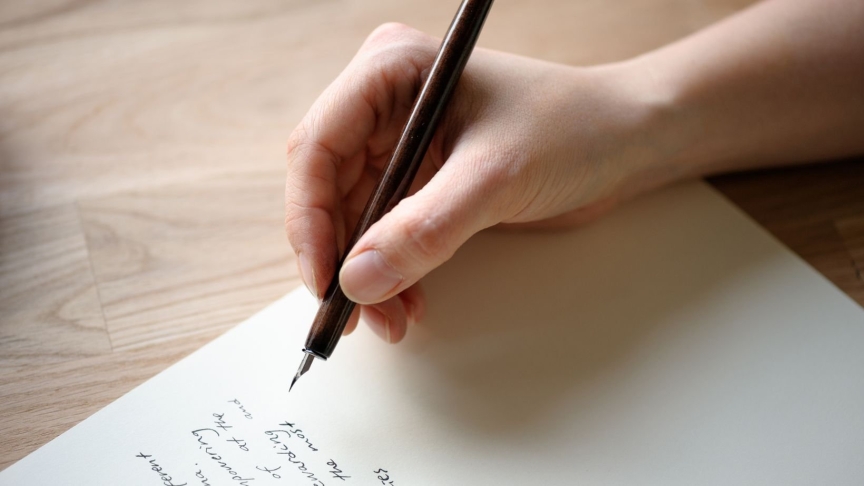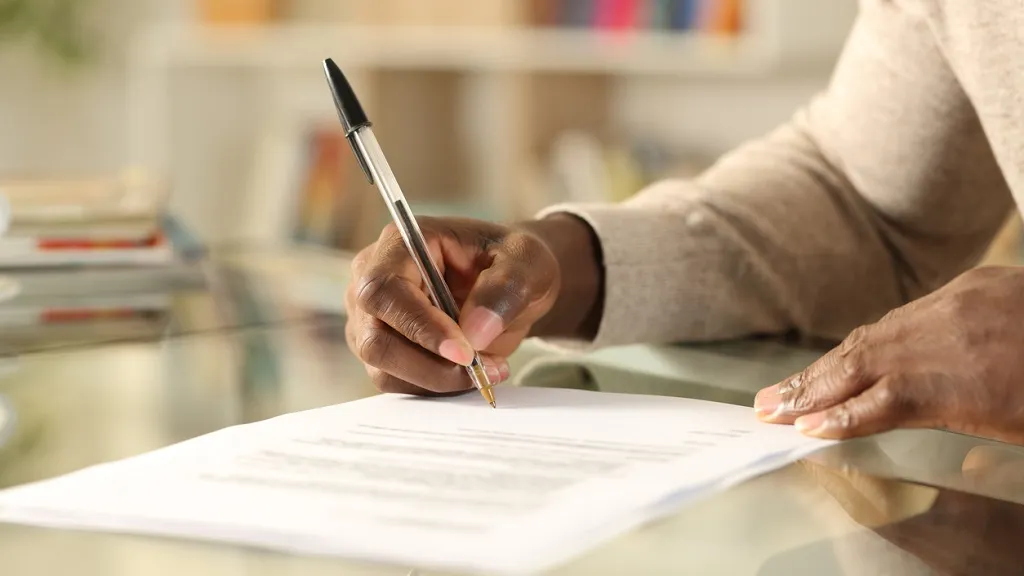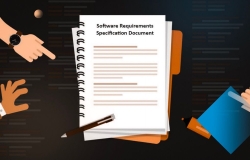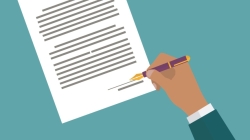
Although most people today communicate through phone calls, emails and instant messaging, there are still occasions when it is helpful to know how to write a formal letter. For instance, you may need to submit a formal request to a business, write recommendation letters, job cover letters, job application letters, resignation letters, legal correspondence or any other form of professional communication. Learning how to address a formal letter the right way helps the sender stand out from the rest and create a positive impression on the recipient.
What is a Formal Letter?
A formal letter, otherwise known as a business letter is a letter written by one company to another, or between such organizations and their customers, clients, or other external parties. Formal letters are usually written in formal language and in a stipulated format for official purposes. A formal letter needs to be precise and to the point. Tone, or the way your letter sounds, is very important and finding the right tone can sometimes be difficult. You may need to be firm, but polite. In a formal letter, the aim is to sound business-like. Avoid any language that seems casual or chatty.
Think about the purpose of your letter and include all the relevant details to help the reader to respond. For example:
- In a letter of complaint, include a summary of what has happened to prompt your complaint, with names, locations and dates, if necessary.
- In a job application, include some specific details about why you are an ideal candidate for the role.
While formal letters are written and sent to authorities, dignitaries, colleagues, seniors etc, an informal letter is written in a friendly manner, to someone you are familiar with, example your personal contacts, friends or family. A number of conventions must be adhered to while writing formal letters. Let's take a look at what makes up a formal letter.
Parts of a Formal Letter
Formal letters must follow all the rules of professional letter writing, including the return address (letterhead or your name and address), date, an inside address (receiver's name and address), a salutation, body paragraphs, and a closing. Although written in an official style and a particular format, formal letters should be simple, as clear as possible and straight to the point. Formal letters include the following parts:
Sender’s Address
This is your address or the address of the company sending the letter. The sender's address should be complete and accurate in case the recipient of the letter wishes to get in touch with the sender for further communication. Things you can put in your address include:
- Name: Add your full name or company name (in the case of a company).
- Street address: State the address where you currently live. If you are representing a company, write the company’s address.
- Location: Also include your city and state. Add your country if you are sending the letter to another country.
- Phone number(s): Mention the number where you can most easily be reached.
- Email address: This is only needed for written letters; for email letters, the email itself serves as a record of your email address.
End each line with a comma except the last line which should be ended with a full stop. The sender's address can be aligned to the top right-hand corner, top left-hand corner or top center depending on the letter format and layout being used. See various ways to format a formal letter, for a better understanding.
Date
The sender’s address is followed by the date just below it. This is the date on which the letter is being written. The date is important in formal letters for two reasons: if you're trying to get the person or organization to complete a task in a timely manner (send a paycheck, fix an order, etc.), it will give them a time frame to work with or if you need to save a copy of the letter for legal reasons or posterity, the date is absolutely necessary. In the US dates are nearly always written month day, year. For example: October 10, 2020. (Don't forget the comma, which avoids confusion by separating the two numbers.) In the UK it is more typical to put day month year, like this: 10 October 2020. Don't include an 'of' between the day and the month: the 'of' is always spoken but never written. Ordinal abbreviations ('st', 'nd', 'rd', 'th') after the day are optional. Place the date directly below the sender’s address. The date should be one line beneath the sender’s address.
Recipient’s Address
Usually aligned to the left, this is the address of the company or person you are sending the letter to. Place the recipient’s name one line beneath the date. Include his or her title (eg: Mr. Ed Smith,). Recipient's name is optional. Follow the recipient’s name with his/her job title (eg: The Hiring Manager,). Below the name and job title, write the name of the company. One line below that, write the recipient’s street address. On the next line, write the recipient’s city, state, and country (if need be). If you do not know the recipient’s job title, do some background research or call the company to find out. Again, ensure you end each line with a comma except the last line which should be ended with a full stop. Note: If you are sending an email letter, you do not need to include the sender's address, date and recipient's address above.
Greeting or Salutation
This is where you greet the person you are addressing the letter to. Bear in mind that it is a formal letter, so the greeting must be respectful and not too personal. Salutation comes one line after the recipient’s address. It is always advisable to personalize the greeting by finding out the name of the recipient. Sometimes, a quick Google search of the company can reveal the name you are looking for. In the case of a job application, you can find the name of the hiring manager in the job posting. But remember you cannot address them only by their first name. It must be the full name or only their last name followed by a comma. For example, Dear Mr. Smith, or Dear Mrs. Smith, or Dear Dr. Smith, as the case may be. If you absolutely cannot find a name, the general greetings used in formal letters are Dear sir, or Dear madam, depending on if the recipient is male or female. You can also use Dear sir/madam, if you don't know their gender. If you are writing to a woman and do not know if she uses Mrs or Miss, you can use Ms., which is for married and single women. Avoid "To Whom It May Concern", which is a generic greeting and demonstrates a lack of effort.
Subject / Title
After the salutation/greeting comes the subject or title of the letter. In the center of the line write "Subject" followed by a colon (optional). Then sum up the purpose of writing the letter in one line. This helps the receiver focus on the subject of the letter in one glance. However, it is not every letter that needs a Subject. Title or not, this depends on the type of formal letter you are writing. For example, if you are writing a job application letter, you need a subject that states the position you are applying for. For example, APPLICATION FOR THE POST OF ACCOUNTANT. Note: Write the Subject in uppercase. If you prefer to write it in lower case, make sure to underline it.
Body of a Formal Letter
This is the main part of the letter. It is best to use short, clear, logical paragraphs to state your business. The body of a formal letter need not be more than three paragraphs. Professional formal letter paragraphs should be relatively concise. If you can’t make your point in three paragraphs or less then you’re probably not being concise enough. The body and ultimately the entire letter should fit into one page.
- Opening paragraph: Use your opening paragraph to introduce yourself and your reason for writing the letter. It’s crucial that your message is direct and underlines why you’re contacting the recipient. Consider this paragraph as a direct way to capture their attention.
- Second paragraph: This paragraph delves into the issues raised in the opening paragraph. Give more detail of what you’re offering or asking of the recipient, backed up by relevant information. Use this paragraph to expand upon your reason for writing.
- Final paragraph: Ensure that you include a closing statement that thanks the recipient for their time, knowledge or help with the discussed points. The final paragraph should state your plan of action (or request some type of action be taken by the reader). It’s good practice to include a line such as ‘please contact me at your earliest convenience’ to show your interest in communication and readiness to act.
Closing / Signature
Closing Signing off at the end of your letter is one of your last opportunities to make an impression. Depending on your relationship and reason for writing to the recipient, there are several options available to you. If in doubt, picture yourself as the recipient, how would you like to be addressed? These options (very formal) are acceptable when you’re contacting someone for the first time or you’re discussing a serious issue.
- Yours sincerely,
- Yours respectfully,
- Yours truly,
- Yours faithfully, - appropriate if you don’t know the recipient’s name
As reported by Oxford Handbook of Commercial Correspondence: If the letter begins with Dear Sir, Dear Madam, or Dear Sir/Madam, the COMPLIMENTARY CLOSE should be "Yours faithfully". If the letter begins with a personal name, e.g. Dear Mr James, Dear Mrs Robinson, or Dear Ms Jasmin, it should be "Yours sincerely". These options (formal) would still be acceptable when contacting someone for the first time but demonstrate a friendlier tone.
- Kindest regards,
- Kind regards,
- Yours appreciatively,
Once you’ve established a relationship with the recipient, there is no need to maintain a formal tone (unless you’re discussing a serious issue), relaxed formal tone will do.
- Warm regards,
- Best wishes,
- With regards,
- Thank you,
- Best,
Signature Your signature should be one line below your sign off. Including your signature at the end of a formal letter displays professionalism. Write your signature by hand after printing the letter, followed by your typed name. If your letter is an email, simply include your typed name only. It's a good practice to set up and use email signatures. Finally, don't forget to spell check and proofread your letter before you send it. Again, ask a family member, friend or colleague to review it for you. It's always good for another pair of eyes to take a look because it's hard to catch our own mistakes.
What to avoid when you’re writing a formal letter
- Hand-writing a formal letter.
- Using fancy fonts and large font sizes. (Use a font size of 10-12 pt and a standard font such as Arial or Times New Roman).
- Spelling and grammatical errors. Grammarly is a free tool you can use to proofread your work.
- Using contractions, i.e. ‘I’m’ should read ‘I am’. ‘That’s’ should read ‘That is’. ‘You're’ should read ‘You are’.
- Including unnecessary information.
- Abbreviations or slang.
-
Emotional evaluation (use only facts).
- Making the same point multiple times.
- Over-complicated language, i.e. ‘the issues highlighted are indicative of future failings’ could read ‘I believe these issues will lead to a problem’.
Sample Formal Letter
Finally, to give you a complete picture of what a formal letter is, find below, a sample hand-written formal letter to the editor of a daily newspaper complaining about the construction work on your road in the middle of rainy season causing inconveniences to the people of your locality.
Kunle Ahmed Eze,
4th Avenue, Lekki Phase 1,
Lekki, Lagos.
08012345678,
11th June 2018.
The Editor-in-Chief, Punch Newspapers, 7th Avenue, Lekki Phase 2, Lekki, Lagos. Dear sir,
CONSTRUCTION WORK IN LEKKI DURING RAINY SEASON CAUSING US DIFFICULTIES
Through the medium of your esteemed and respected daily, I wish to inform the municipal authorities of the difficulties the residents of my locality are facing due to the construction and repair work currently happening in our area. Rainy season has started a few days ago and is compounding our problems. The repair work has been ongoing for seven weeks now and is falling way behind schedule. And now with the current weather conditions, we are having persistent problems of water logging and flooding in our area. Another worry is about the accidents that may occur due to the debris lying around the road. Diseases caused due to waterlogging are another one of our concerns. Therefore I wish to draw the attention of the concerned authorities with the help of your newspaper. Hopefully, you will be able to help us in drawing their attention and resolving this matter at the earliest. Yours faithfully, **Signature** Mr. Kunle Ahmed Eze
Using "CONSTRUCTION WORK IN LEKKI DURING RAINY SEASON CAUSING US DIFFICULTIES" as subject of the mail, here's a sample format of the same letter sent via email.
Dear sir, Through the medium of your esteemed and respected daily, I wish to inform the municipal authorities of the difficulties the residents of my locality are facing due to the construction and repair work currently happening in our area. Rainy season has started a few days ago and is compounding our problems. The repair work has been ongoing for seven weeks now and is falling way behind schedule. And now with the current weather conditions, we are having persistent problems of water logging and flooding in our area. Another worry is about the accidents that may occur due to the debris lying around the road. Diseases caused due to waterlogging are another one of our concerns. Therefore I wish to draw the attention of the concerned authorities with the help of your newspaper. Hopefully, you will be able to help us in drawing their attention and resolving this matter at the earliest. Yours faithfully, **Email Signature**
You might want to see more sample templates.
Trending ↝
➤ How To Check If Company / Business Name Is Registered in Nigeria With CAC
➤ Pastor Jerry Eze Whatsapp Channel – Official Link, How to Join & What to Expect
➤ NECO Timetable 2025 (PDF Download) – Full SSCE Internal Exam Schedule
➤ NSPPD Live Today: Prayer Time, How to Join, Testimonies, Declarations, & Giving Information
➤ List of 36 States Governors in Nigeria, Their Deputies, and Political Parties (2025)
➤ How To Contact GOtv Customer Care in Nigeria
➤ How To Check Vehicle Number Plate Registration in Nigeria
➤ NELFUND Student Loan: Portal, Login, How to Apply, All You Need to Know
➤ How To Write An Informal Letter
➤ Local Government Areas (LGAs) in Lagos State: Full List & Details
➤ How to Check NIN Number Online Using Phone USSD Code *346#





